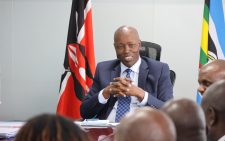How meaning and values give rise to community prohibitions

If you see someone walking right behind you, you get suspicious and your brain automatically draws connections to past experiences and draws conclusions.
If you see people running in one direction, especially if you are used to city county officers versus hawkers runs, you will automatically run with the masses.
These associations, according to Allan Lawrence, a counseling psychologist and author, are formed through experiences either lived by the individual or passed down from other people in speech, or through interactions such as social media.
Similarly, culture evolves along with the masses’ change in perceptions and how they think about things.
For example, some African communities revered dreadlocks in the past yet they are associated with crime and fear today. Why is this?
Revered symbol
“It is important to start by noting that African culture is not homogenous. Some practices may be similar in some communities yet have different significance.
In Kenya, for instance, the Maasai and Samburu communities wore dreadlocks. They were the mark borne by warriors and served to show that one was no longer a boy but a man, a moran.
The Kikuyu community never had dreadlocks in their culture. Dreadlocks among the Maasai and Samburu were sex-selected as the women could not wear them,” Dr Francis Kerre, a sociologist and don at the Kenyatta University explains.

He elaborates that during the struggle for independence, many Kikuyu warriors referred to as Mau Mau would grow dreadlocks as they had no time to shave; they were busy fighting the British.
The dreadlocks signified protection against oppressors— British colonialists and Kenyan home guards. Anyone with dreadlocks was revered.
Naturally, other Kikuyus started growing dreadlocks as a way to associate themselves with the Mau Mau who represented a refusal to cow to colonial rule.
This is why after Kenya gained her independence in 1963, many shaved their dreadlocks as they deemed that the struggle against the oppressors was over.
In the early 1980s, the Mungiki, a sect that claimed to promote pluralism and sought to uphold traditional African values and thwart Western culture, started operating.
Their main identifying factor was the long dreadlocks they spotted. They started recruiting people through oath ceremonies and would seek to promote social revivalism through the institution of taxes payable to them in some communities and bus stops. The sect was mostly made up of Kikuyus.
While some things they advocated for such as their crusade against drunkenness, broken families, and vices like prostitution resonated with many, there are some, such as promoting Female Genital Mutilation (FGM), that were rejected by many. The sect members were feared as they would easily resort to violence.
This might be the genesis of why most Kenyans today associate violence with dreadlocks.
It might also be a remnant of the colonisation mindset where African hair, especially dreadlocks were demonised.
That most thugs who are caught tend to spot dreadlocks might further entrench the harmful image that society has about dreadlocks yet that equally many people with clean or even bald heads are also arrested may not sway the masses.
Changing culture
“The meaning of things changes over time. In the early 1950s for instance, women could dress in tiny skin dresses called muthuru in the Kikuyu language, without being frowned upon.
This is in part because the systems protected girls and young women. Young men would not dare touch a girl as there were heavy punishments for such.

Moreover, work was performed by gender hence girls would be hanging out with other girls and young women as they drew water from the river and collected millet while men would be hunting or looking after livestock with their fellow men. Modernity broke down these values,” says Dr Kerre.
Today, there are cases of men and even women stripping women they deem scantily dressed.
Ironically, some of these women might have even dressed in the micro-minis at some point in their lives.
“What has changed is what society seems to think short dresses mean. While earlier they were just a way of dressing with no sexual connotations, today the short dresses are associated with sexual attraction.
Most people who strip women in short dresses seem to think they are upholding African culture and sanctity of sex. Whether this is correct or not is an entire discussion for another day,” he explains.
While the meaning of things and the associations and connections we make between things changes over time, it is important to be careful not to get mired in stereotypes and to not judge everyone based on past associations.
While this may seem hard, it can be learned and help prevent disastrous outcomes such as the killing of innocent people deemed to be criminals all because they spot dreadlocks.
“It is important to first of all question the beliefs and associations we have with things and learn where we picked these from.
This way we can either uproot the entire association programme or hold that it is true in some instances but not all.
In a world that is constantly changing, we should be open to more experiences with different people from different walks of life who will challenge our beliefs as this helps make more balanced and nuanced associations.
“Before writing off people as the stereotypes that we already know, it is important to be open to their side of the story.
You might learn something new that might unseat the stereotype, thereby making you more open to new associations,” Lawrence says in conclusion.












